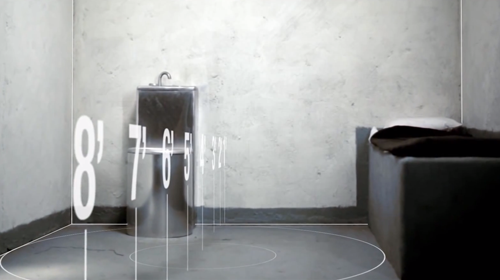
Matthew was seventeen. Heтd been diagnosed with bipolar disorder and has struggled with serious drug dependency and a difficult home life. He needed help. Instead, he got locked in тthe box.т
This is how notorious New York City jail Rikers Island routinely deals with mentally ill teenagers. But solitary confinement isnтt solving their problems.
While awaiting sentencing on a larceny conviction, Matthew got into a fight with a prison guard, during which, Matthew says, the guard тrippedт Matthewтs rosary off his neck. Matthew was sent to тdisciplinary segregationт т one of the many names for solitary confinement т for 250 days. This adolescent boy spent more than two-thirds of a year in a small cell, alone for 23 hours a day. He was not able to go to school; instead, he was given worksheets to complete. тI talk to myself,т Matthew said of his daily life, тThis is crazy. I really feel like Iтm bugging out in that cell.т
Matthewтs story is one of three in a by the City of New York Board of Correction about Rikers Island. Each of the young men profiled was placed in punitive segregation at Rikers for more than 200 days. All of them were teenagers. All three suffer from serious mental illness, and they all have fathers who have been incarcerated.
Rikers is part of the adult system, but teens make up about 5% of the average daily population. This is in part because New York State law punishes 16- and 17-year-olds as adults, regardless of their offense. РЯАФУХПЊНБНсЙћ a fourth of teens aged 16, 17, and 18, may be held in solitary as punishment on any given day at Rikers. And 71% of those kids will have been diagnosed as mentally ill.
Young people are different than adults. American law, including Supreme Court cases banning the and for children, recognizes the distinction. And psychological experts have commented on the extreme vulnerability of children in prison to developmental harm and mental deterioration, including depression, hallucination, and increased likelihood of self-harm, when held in solitary confinement. Yet Rikers continues to hold adolescent prisoners т on an average day, hundreds of them т in solitary confinement.
But some help might be coming for these kids. In September, the City of New York Board of Correction to start the process of making new rules to govern the use of solitary confinement at Rikers. Although overdue, this plan to regulate the practice has the potential to bring New York City into closer conformity with international human-rights standards т and to decrease the chances that its jailing practices are causing long-term damage to young prisoners. In writing its new rules, the Board of Corrections should place an outright ban on the use of solitary confinement on children and adolescents. The Board should also place limits on the time any prisoner spends in isolation, and it should closely monitor the length of stays in isolation, and the reasons for them.
By committing itself to drafting new regulations, the New York City Department of Correction joins a growing trend in the reduction of the use of solitary confinement. A number of state prison systems across the country т including those in , Illinois, and Maine т have in recent years reformed and reduced their use of solitary confinement due to financial, safety, and humanitarian concerns. And less than two months ago, the U.S. Immigrations and Customs Enforcement (ICE) released a new directive regulating the use of solitary confinement in immigration detention facilities; the ICE regulations now require reporting of any placement in isolation for longer than 14 days, and monitor vulnerable detainees, including children, even more closely. New York City should follow the lead of these other correctional and detention facilities in aiming to permanently change the way solitary confinement is used in this country: from a routine detention practice to a measure of extreme last resort т and never as a means of holding children.
Learn more about solitary confinement and other civil liberty issues: Sign up for breaking news alerts, , and .

